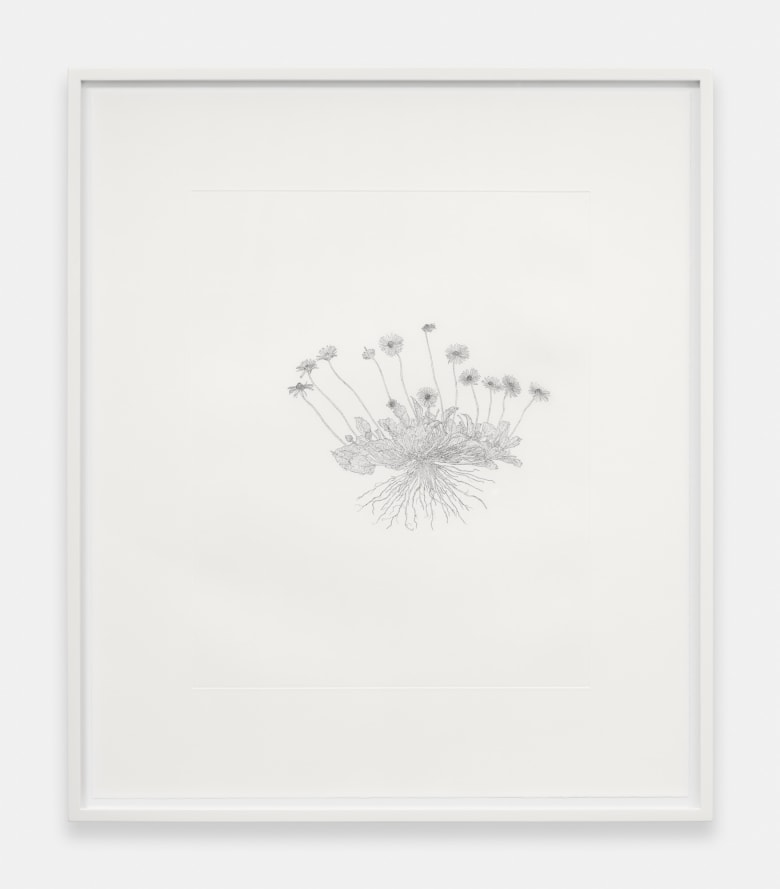 Common Daisy, 2024
Common Daisy, 2024
etching on paper
71 x 60 cm.
28 x 23 1/2 in.
edition of 6 + 1AP
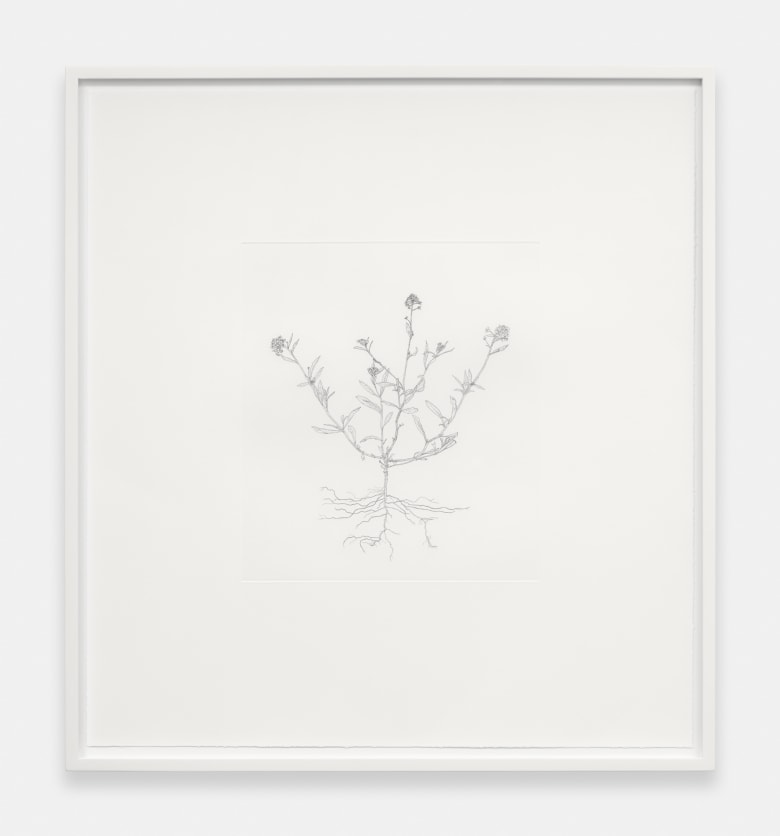 Sweet Alison, 2024
Sweet Alison, 2024
etching on paper
64 x 58.5 cm.
25 1/4 x 23 in.
edition of 6 + 1AP
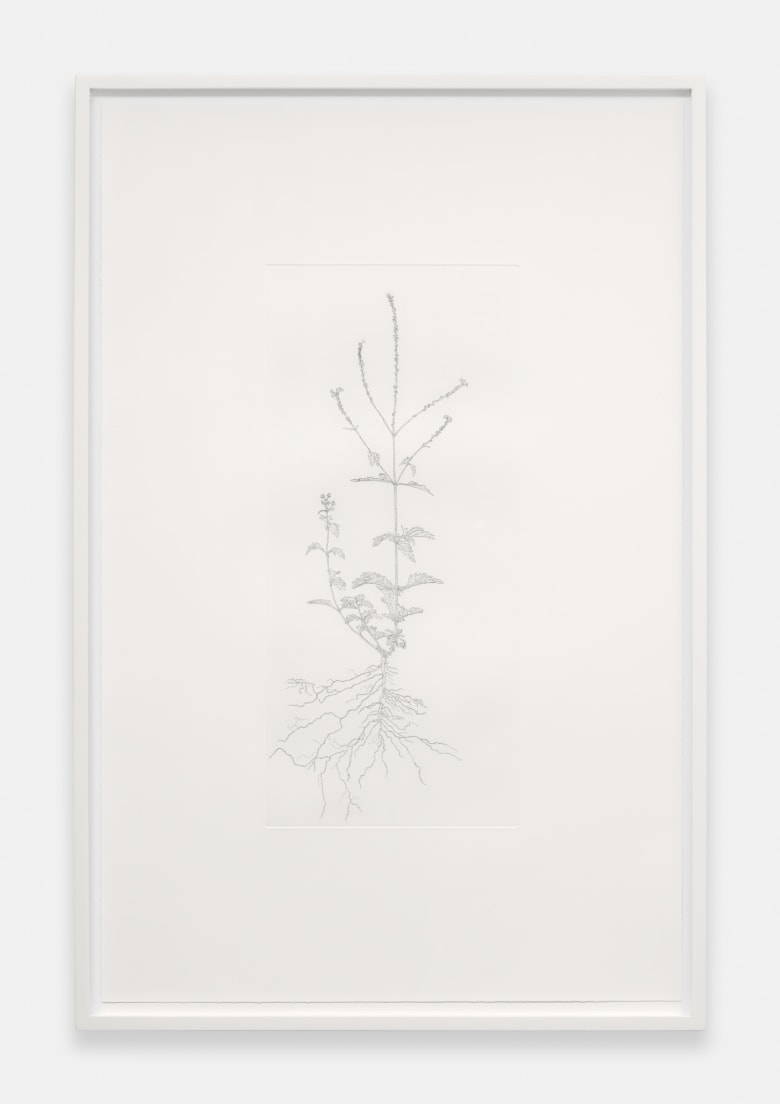 Common Vervain, 2024
Common Vervain, 2024
etching on paper
77.5 x 49.5 cm.
30 1/2 x 19 1/2 in.
edition of 6 + 1AP
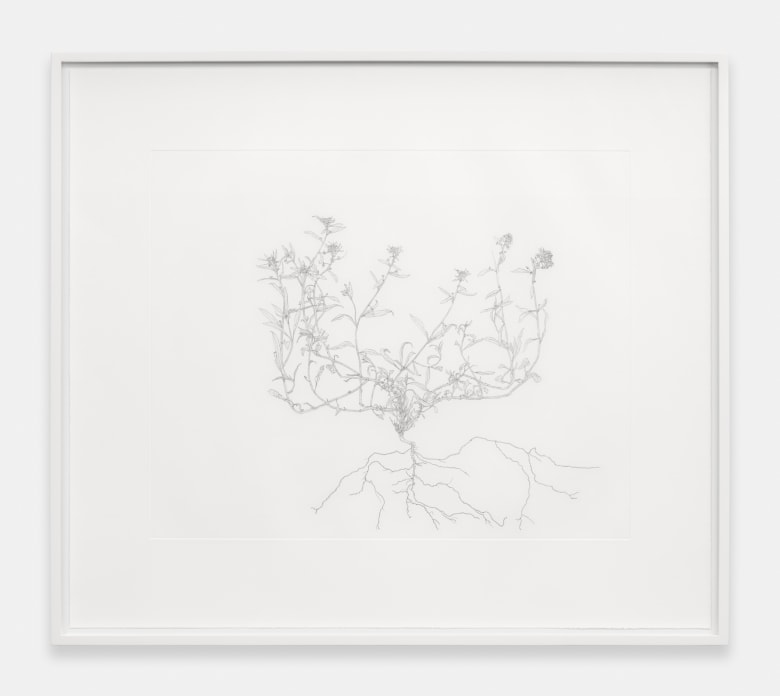 Sweet Alyssum, 2024
Sweet Alyssum, 2024
etching on paper
69 x 79.5 cm.
27 1/4 x 31 1/4 in.
edition of 6 + 1AP
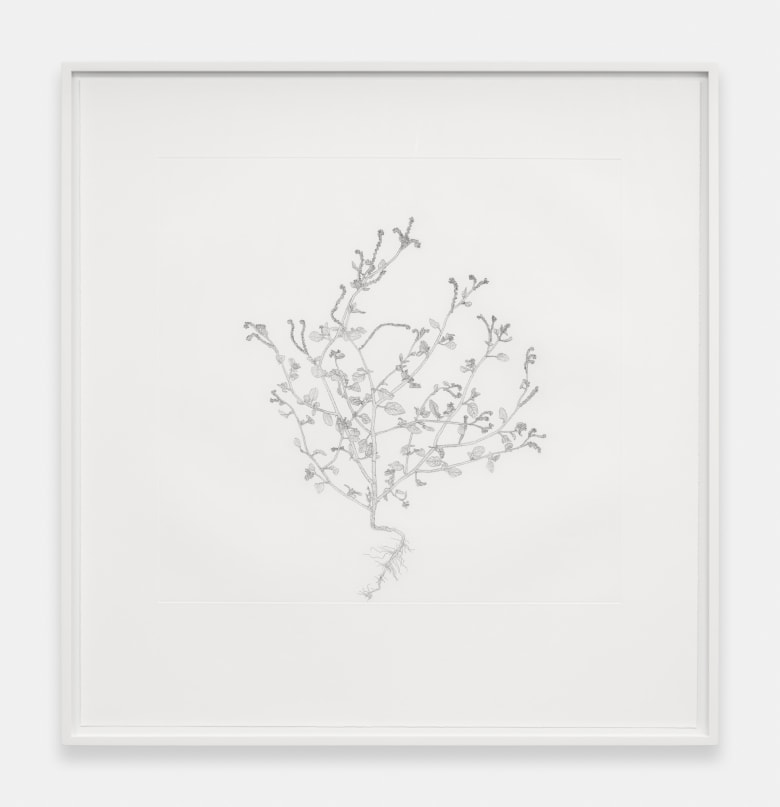 European Heliotrope, 2024
European Heliotrope, 2024
etching on paper
83.5 x 80 cm.
32 3/4 x 31 1/2 in.
edition of 6 + 1AP
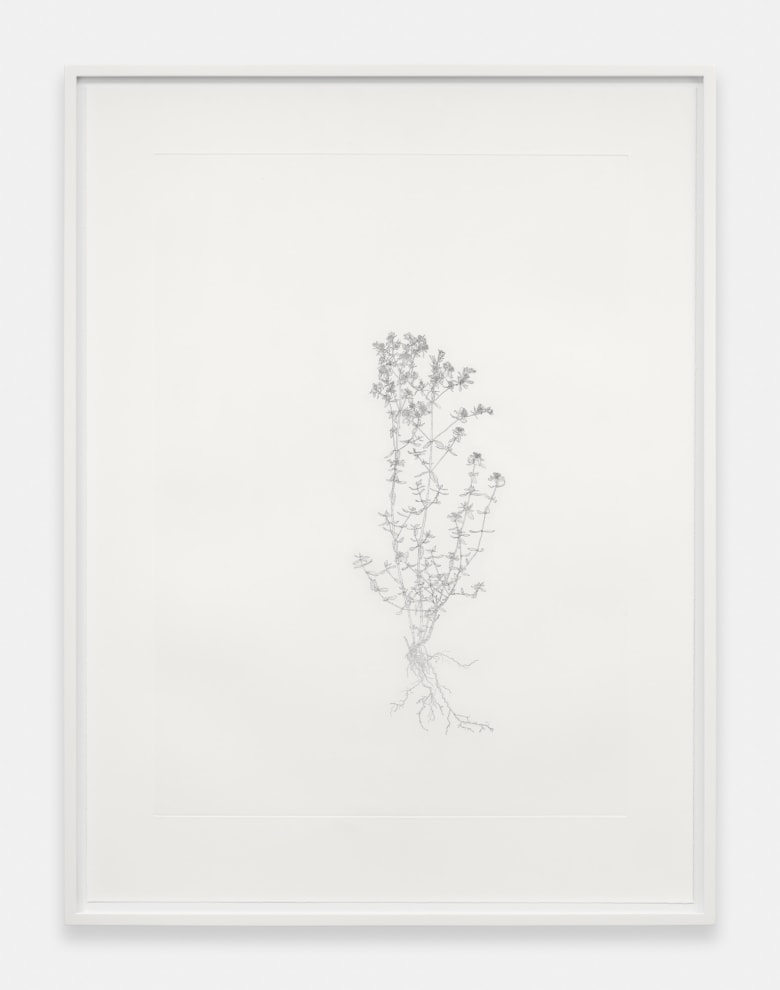 Common St. John’s Wort, 2024
Common St. John’s Wort, 2024
etching on paper
86 x 64 cm.
33 3/4 x 25 1/4 in.
edition of 6 + 1AP
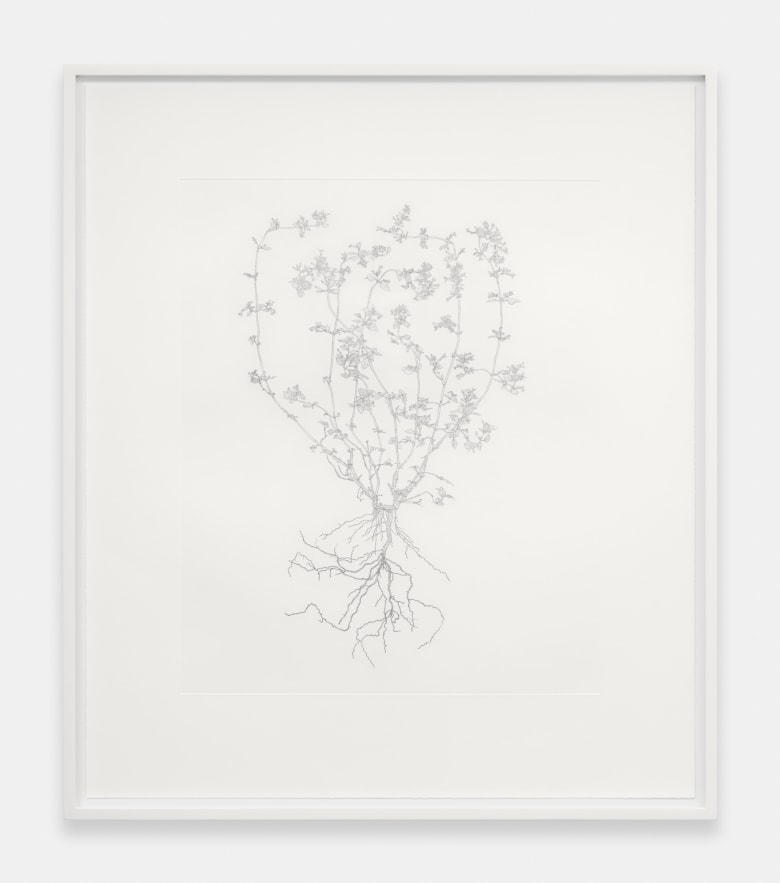 Lesser Calamint, 2024
Lesser Calamint, 2024
etching on paper
76 x 65 cm.
30 x 25 1/2 in.
edition of 6 + 1AP
Michael Landy's Nourishment works from 2002 rendered the overlooked city weeds we encounter growing between paving cracks in meticulous one to one detail. Landy revisited this series over twenty years later for his first exhibition in Naples, Art Lovers, creating a new series of intricate etchings of weeds from the streets and roadsides of the Italian city, which were made over many trips during 2024.
For these intricate works, Landy collected individual weeds and took them back to his studio where he potted and tended them, making life-sized studies of their structures including detailed renderings of roots, leaves and flowers. Landy has described why he was drawn to these ‘street flowers’ by saying, ‘they are marvellous, optimistic things... they occupy an urban landscape which is very hostile and they have to be adaptable and find little bits of soil to prosper’. Weeds are hardy, thriving in often inhospitable conditions with very little soil, water or direct sunlight. They grow between paving stones or on waste ground in the city, tenaciously asserting themselves despite being overlooked by the majority of passersby.
Nourishment exhibits a strong continuation of Landy’s engagement with marginalisation and our ideas of value, and his interest in the overlooked or disregarded. By studying these humble plants that struggle to survive amongst the cracked pavements of our city streets, he finds beauty in the ordinary, giving new meaning and dignity to that which is passed over by most.
